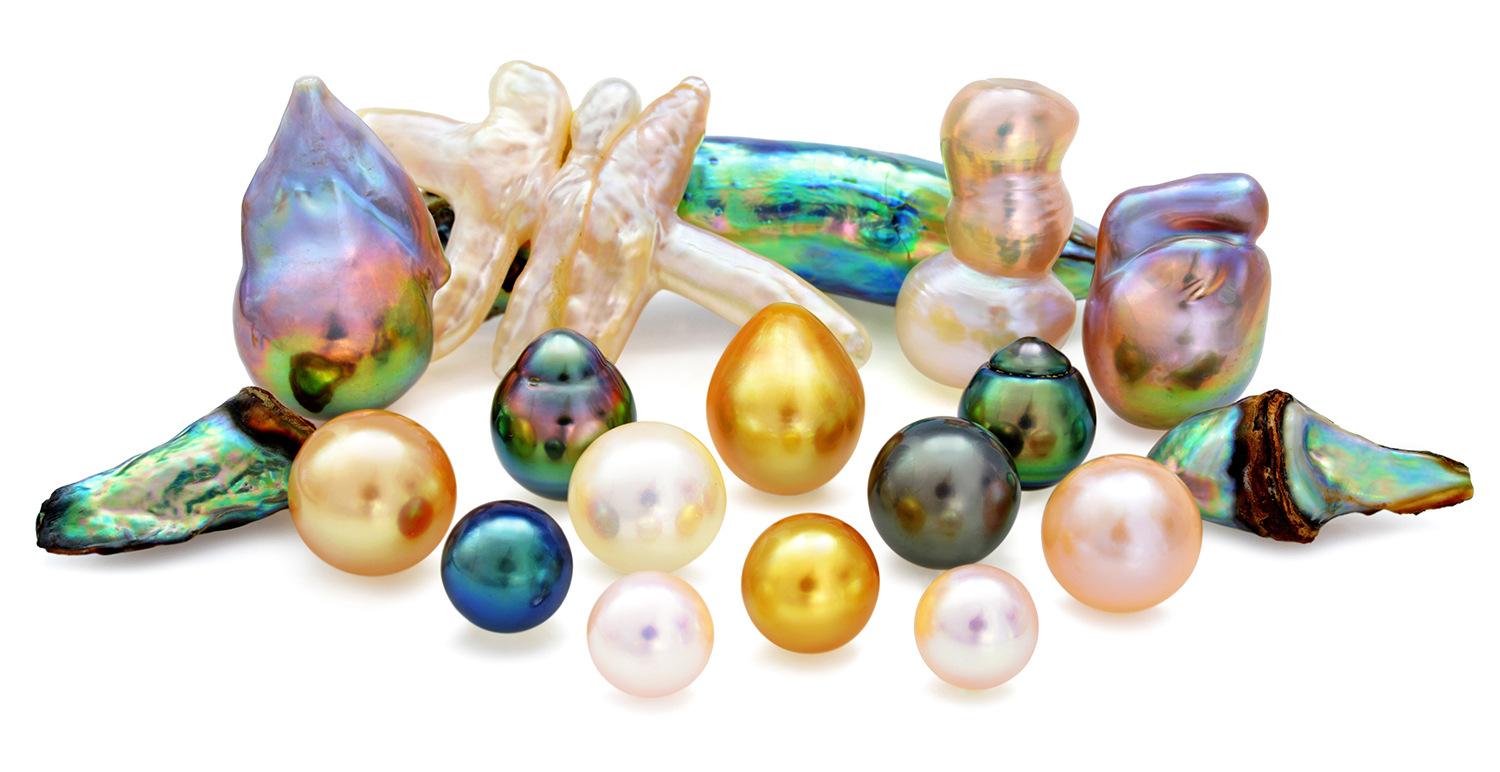Pearls are reactive to certain chemicals and acids so proper care is necessary to keep them beautiful and lustrous.

Pearls are the world's only organic gems and are composed of calcium carbonate. With a hardness of 2½ to 4, pearls are softer than most gemstones but still considered to be fairly tough and durable. Although pearls are exceptionally cohesive and shock-resistant they may easily be scratched by contact with sharp objects or other gemstones. To prevent tangles and scratches they should be stored separately in a compartmentalized jewelry box.
As organic gemstones, pearls are vulnerable to acids, alkaline solutions, and different levels of humidity. Perfumes and hairsprays, which contain alcohol and acids should be avoided on areas where pearls are worn. Perspiration can also harm the beauty of pearls, and dull their beautiful luster. After wearing, they should be wiped with a damp (not wet), soft cloth or a silicon cloth. If make-up and perfume accumulate, a very mild soap may be used.
Some women's skins are more acidic than others. If a pearl necklace is worn regularly, some of the pearls will be in close contact with the skin on the neck or at the shoulder line. Pearl pendants do not always have such constant contact but pearls in a necklace will gradually absorb acid from the skin and the acid will slowly eat into the pearls and affect a loss of luster. This process can be slowed by gently wiping the pearls with a soft cloth to remove body oils or dirt before putting them away.
When removing a pearl ring after wear, it should be grasped by the shank, or metal part, rather than by the pearl. This will prevent the pearl from loosening as well as from coming into contact with skin oil on your hand.
Pearls should not be stored in airtight packages such as plastic bags because pearls need moisture. If the environment is too dry, the pearls may crack. When placing pearls in a safety deposit box or in a hot environment a damp cloth should be left to provide some moisture. When carrying or transporting pearl jewelry, protective jewelry pouches should be used. Leaving pearl jewelry in a security box for long periods may cause pearls to dehydrate, so enjoy them frequently. There is a saying that "pearls want to be worn," and it is true!
All trademarks and logos shown herein are the property of their respective owners. © Copyright Multicolour Gems Ltd, 1998-2001. All rights reserved. Use of this site constitutes acceptance of Multicolour Return Policy, Privacy Policy and Trading Guarantee. Multicolour.com headquarters at # 59 Soi Pradit, Silom Soi 20, Bangkok, 10500, Kingdom of Thailand, Tel: +66 2 233-2108, Fax: +66 2 236-5274, E-mail to info@multicolour.com. Lost? Check Site Map. Site design and maintenance by NetComposite ®.
|